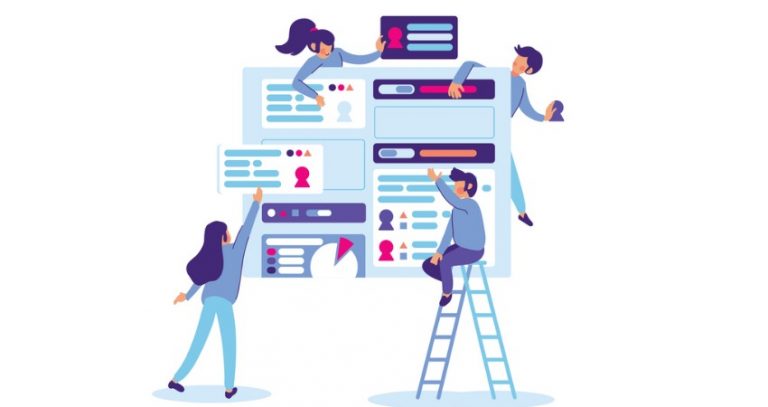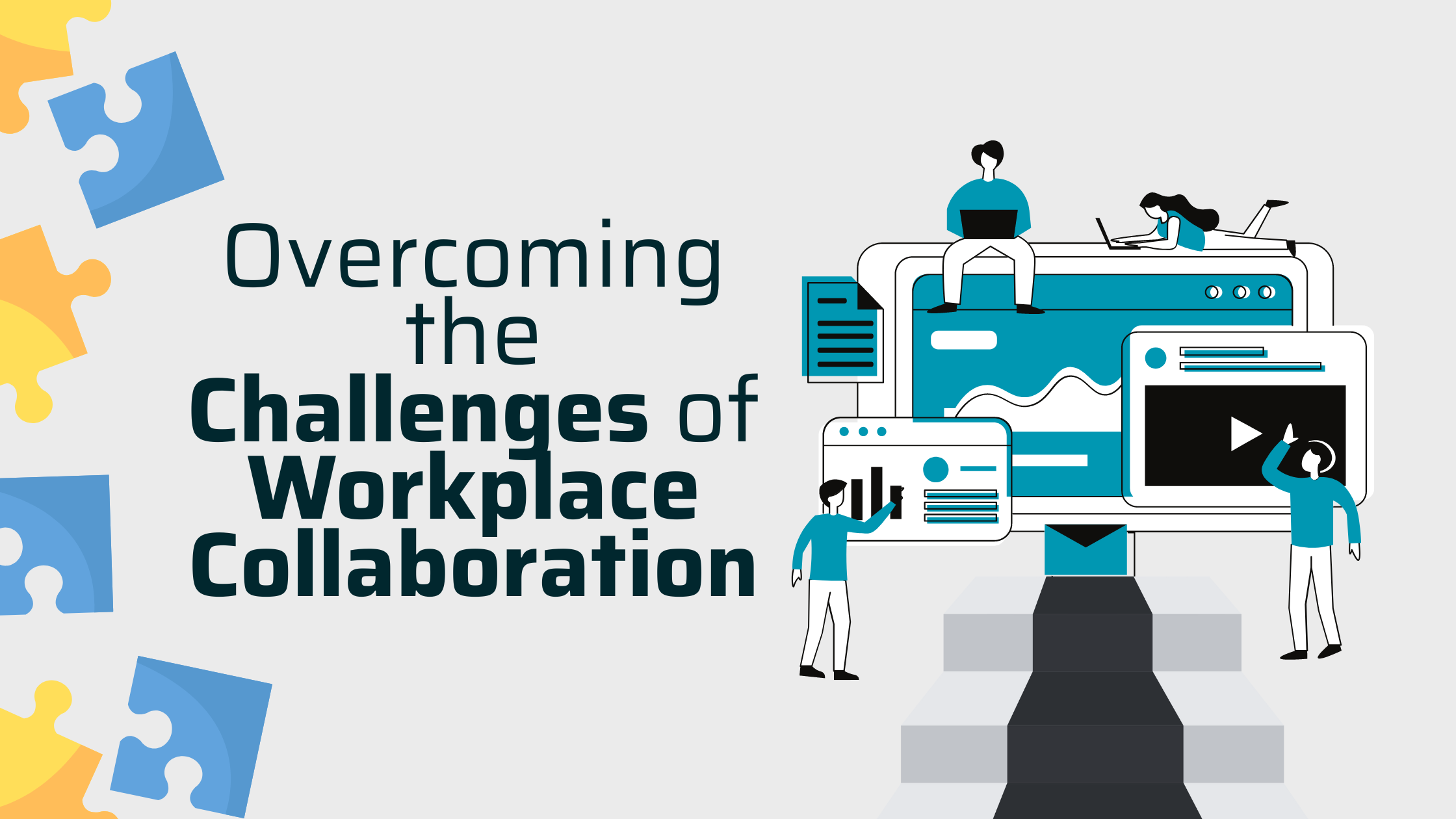In today’s fast-paced and interconnected world, workplace collaboration is an absolute game-changer for organizations. It brings together individuals with diverse skills and perspectives to achieve extraordinary results. Collaboration fuels innovation, supercharges problem-solving abilities, and fosters a strong sense of unity within teams.
Click here to learn all the essentials of workplace collaborations!
The benefits of effective collaboration are boundless for both individuals and organizations. By pooling resources and expertise, teams can conquer complex challenges with remarkable efficiency. Collaborative environments also promote open communication, leading to smarter decision-making processes. Moreover, when employees feel valued for their contributions in a collaborative setting, it boosts morale and job satisfaction.
Common Challenges of Workplace Collaborations
Workplace collaboration, while holding immense potential for growth and success, is not without its fair share of challenges. Let’s delve into the most prevalent obstacles faced by teams in their pursuit of effective collaboration.
- Communication Issues: The breakdown of communication can impede progress and ignite conflicts among team members. It is crucial to address this challenge head-on by fostering open lines of communication and encouraging active listening.
- Lack of Trust or Teamwork: Without a foundation built on trust, individuals may hesitate to share their ideas or confidently delegate tasks. Cultivating a culture that values trust and teamwork is essential for overcoming this hurdle.
- Difficulty in Coordinating Schedules and Tasks: Aligning efforts towards shared outcomes becomes an uphill battle when conflicting priorities and differing work styles come into play. Employing collaborative tools and establishing clear guidelines can help overcome these coordination challenges.
- Differing Work Styles or Approaches: Varied approaches to work within a team can lead to misunderstandings and hinder collaboration. Embracing diversity in work styles while promoting effective communication channels will foster understanding among team members.
- Conflicting Priorities: When different goals and objectives exist within a team, tension arises, hindering collaboration. By aligning individual goals with overarching team objectives through transparent discussions, this barrier can be effectively addressed.
By recognizing these common challenges in workplace collaboration, teams can proactively implement strategies to overcome them. Keep reading to learn how!

Overcoming Common Challenges in Workplace Collaboration
Collaboration is the lifeblood of a thriving workplace. It’s where teams come together, exchange ideas, and achieve remarkable results. However, even with its undeniable importance, workplace collaboration can sometimes hit roadblocks that hinder progress. In this section, I will delve into the most prevalent challenges faced by teams when collaborating and provide expert insights on how to overcome them for enhanced productivity and harmonious work dynamics.
Create a Workplace Culture of Transparency
Foster an environment where collaboration and teamwork thrive by encouraging open dialogue and transparency within your team. This collaborative culture allows everyone to freely express their thoughts, ideas, and concerns without any fear of judgment or retribution.
Master the Art of Active Listening
Show your colleagues that you value their input by actively listening to them. Give them your full attention, maintain eye contact, and avoid distractions like checking emails or scrolling through your phone during conversations. By doing so, you demonstrate respect for their opinions and create a more engaging atmosphere.
Clarify Expectations
To ensure smooth workflow and effective communication, it is crucial to clearly communicate expectations regarding deadlines, deliverables, roles, and responsibilities. By eliminating confusion or miscommunication from the start, you set the stage for successful collaboration.
Choose the Right Communication Channels
Different situations call for different modes of communication. While email may be suitable for formal documentation or lengthy discussions, instant messaging platforms like Slack or Microsoft Teams can facilitate quick questions or updates. Selecting the appropriate channel enhances efficiency in workplace communication.
Practice Empathy
Understanding others’ perspectives is key to effective collaboration. Put yourself in their shoes to gain insight into their needs and emotions. This empathetic approach enables you to communicate more effectively while considering diverse viewpoints within your team.
Provide Constructive Feedback
When offering feedback to colleagues, focus on improvement rather than criticism alone. Be specific about what worked well and areas that need improvement while providing suggestions for growth. This constructive feedback fosters a supportive environment conducive to personal development.
Check In Regularly
Schedule regular check-ins with individual team members or as a group to discuss progress, address concerns promptly if they arise, and provide support when needed. This ensures everyone stays aligned towards common goals and helps overcome any challenges along the way
Use Technology Tools
Leverage various collaboration tools such as project management software, hybrid video conferencing platforms, shared document platforms, and task management apps to enhance communication and streamline workflows. These tools can greatly improve team collaboration by providing a functional platform for sharing ideas, tracking progress, and managing tasks efficiently.
By implementing these strategies in your workplace culture, you can overcome common barriers to effective teamwork and create an environment that promotes collaboration, trust, and productivity. The importance of fostering a collaborative work culture cannot be overstated, as it not only enhances the overall performance of teams but also contributes to the personal growth and satisfaction of employees. Embrace these key principles to unlock the full potential of your team and reap the numerous benefits that come with successful collaboration.
Unlocking the Power of Effective Communication in Workplace Collaborations
Communication is the lifeblood of successful workplace collaborations. It forms the bedrock upon which teams build trust, exchange ideas, and work towards shared objectives. However, navigating communication challenges can be a daunting task that significantly impacts collaboration within an organization.
- One common hurdle in workplace communication is poor or ineffective interaction. This manifests in various ways, such as unclear instructions, misinterpretation of messages, or a lack of active listening. When team members struggle to communicate effectively with one another, it breeds misunderstandings and confusion.
- Transparency also emerges as a key challenge in effective communication. When information isn’t openly and honestly shared among team members, it creates barriers to seamless collaboration. Without access to all relevant data points, individuals may make decisions based on incomplete or inaccurate information.
- Differing communication styles and preferences can pose obstacles within collaborative efforts. Some individuals thrive on face-to-face interactions, while others rely heavily on digital platforms for their communication needs. These differences can lead to miscommunication if not properly addressed.

The impact of these communication issues cannot be overstated; they hinder productivity by causing delays in decision-making processes and unnecessary conflicts among team members. To overcome these challenges and foster better communication within your organization:
- Encourage employees to express their thoughts openly without fear of judgment or retribution.
- Keep your team updated about project progressions through emails or virtual meetings.
- Encourage team members to attentively listen during meetings or discussions.
Implementing Effective Collaboration Tools
Collaboration tools play a pivotal role in mitigating communication issues. Consider incorporating these tools:
- Project management software: Track progress, assign tasks, and share documents effectively.
- Video conferencing solutions: Facilitate face-to-face interactions even when team members are physically apart.
- Instant messaging apps: Enable quick exchanges of messages for immediate updates or clarifications.
Unlocking Effective Workplace Collaboration
To truly harness the power of collaboration in the workplace, it is imperative to equip your team with the right tools. These collaborative solutions not only address communication issues head-on but also foster a functional and productive work environment. Here are some expert tips to consider when implementing collaboration tools:
- Understand Your Team’s Needs: Before diving into any collaboration tool, take the time to assess your team’s unique requirements. Consider factors such as team size, preferred modes of communication, and project nature. By understanding these needs upfront, you can select a tool that aligns perfectly with your team.
- Embrace User-Friendly Platforms: Opt for intuitive and user-friendly collaboration tools that empower every member of your team. This ensures seamless adoption without any resistance or steep learning curves.
- Break Down Silos With Cross-Functional Collaboration: Look for tools that facilitate effortless collaborations across different teams within your organization. By encouraging knowledge sharing and breaking down departmental barriers, you create a culture of synergy and innovation.
- Prioritize Real-Time Communication: Choose tools equipped with instant messaging capabilities, video conferencing features, and screen-sharing functionalities. These enable swift decision-making processes while fostering stronger connections among teammates.
- Integrate Seamlessly With Existing Systems: Ensure that your chosen collaboration tool seamlessly integrates with other software applications already in use within your organization. This integration eliminates duplication efforts while enhancing overall efficiency.
By following these expert strategies when selecting and implementing collaboration tools, you can conquer communication challenges head-on and cultivate a truly collaborative work environment. Remember, the right tools are instrumental in driving effective teamwork and elevating productivity within your organization.
Taking the Next Steps Toward Enhanced Collaboration
Now that you have gained valuable insights into the importance of workplace collaboration and strategies to overcome communication challenges, it’s time to evaluate your own workplace’s collaboration dynamics. Identify areas where improvements can be made and consider implementing the discussed strategies, such as the following.
- Encourage team members to freely express their thoughts, ideas, and concerns in a safe space.
- Highlight the importance of active listening skills among team members to foster better understanding.
- Keep messages simple yet informative for better comprehension.
- Provide workshops or seminars focused on enhancing interpersonal skills like active listening.
- Leverage collaboration platforms such as project management software or instant messaging apps to streamline communication processes.
Remember, effective collaboration is an ongoing process that demands continuous effort from all team members. By fostering open communication channels, building trust among colleagues, and harnessing appropriate technology tools, you can create a collaborative environment that drives success for both individuals and organizations alike.




